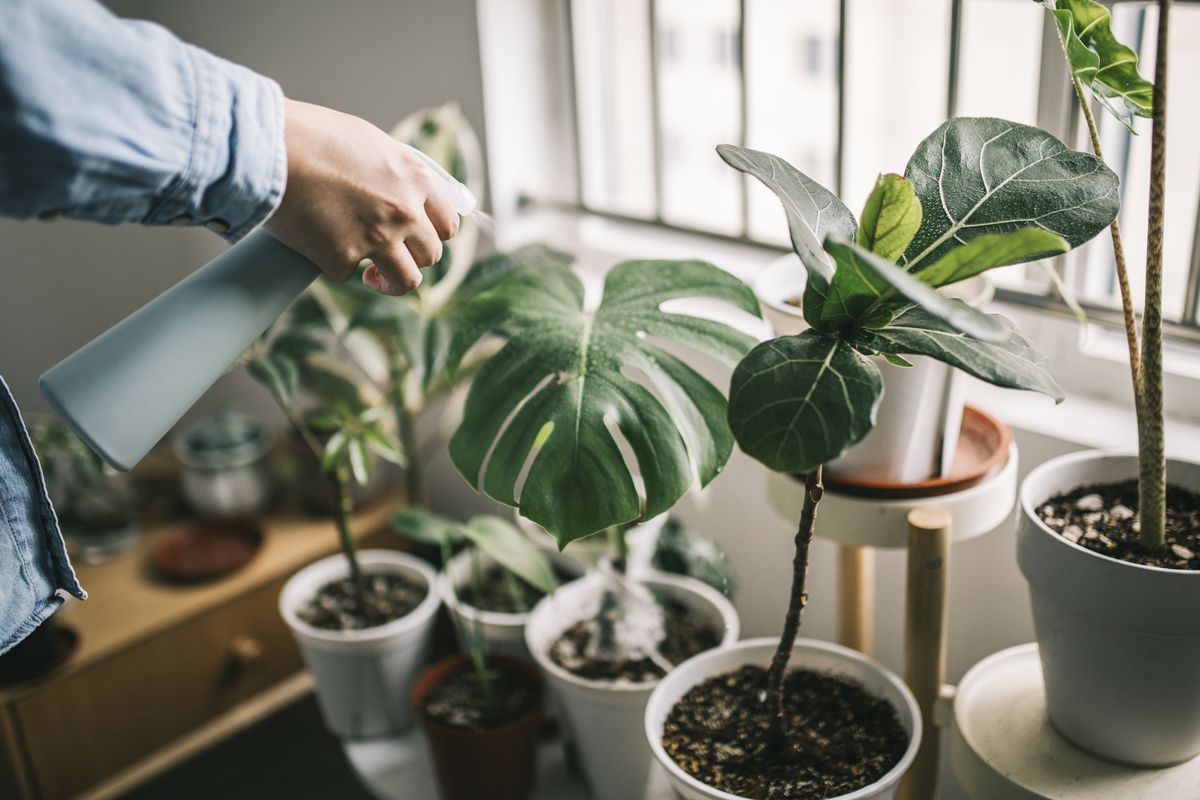Indoor Plants That Can Thrive in Low Humidity

Strong 8k brings an ultra-HD IPTV experience to your living room and your pocket.
Thriving Greenery: A Comprehensive Guide to Indoor Plants That Flourish in Low Humidity Environments
Introduction
Indoor plants have the remarkable ability to beautify our living spaces while contributing to improved air quality and overall well-being. However, maintaining a healthy indoor garden can sometimes be challenging, especially in areas with low humidity levels. Fortunately, there is a diverse range of plant species that have adapted to thrive in such conditions, allowing even those with dry indoor environments to enjoy the benefits of indoor gardening. In this comprehensive guide, we will explore a variety of indoor plants that can flourish in low humidity, providing you with the knowledge needed to create a lush and vibrant indoor oasis.
Table of Contents
Understanding Low Humidity Environments
Benefits of Indoor Plants
Selecting the Right Plants for Low Humidity
List of Indoor Plants That Thrive in Low Humidity
Snake Plant (Sansevieria)
ZZ Plant (Zamioculcas zamiifolia)
Cast Iron Plant (Aspidistra elatior)
Ponytail Palm (Beaucarnea recurvata)
Aloe Vera (Aloe barbadensis miller)
Spider Plant (Chlorophytum comosum)
Jade Plant (Crassula ovata)
Yucca (Yucca spp.)
Peace Lily (Spathiphyllum)
Chinese Evergreen (Aglaonema)
Rubber Plant (Ficus elastica)
Pothos (Epipremnum aureum)
Cacti and Succulents
Caring for Low Humidity Indoor Plants
Watering Tips
Humidity Enhancement Techniques
Proper Lighting
Soil Considerations
Container Selection
Troubleshooting Common Issues
Conclusion
1. Understanding Low Humidity Environments
Low humidity environments are characterized by dry air, where the moisture content in the atmosphere is relatively low. This can be particularly challenging for indoor plants, as many species originate from tropical or subtropical regions with higher humidity levels. In low humidity conditions, plants can experience issues such as increased water loss through transpiration, wilting, and slower growth rates. Understanding the specific needs of plants in such environments is crucial for their successful cultivation.
2. Benefits of Indoor Plants
Before delving into the specific plants that thrive in low humidity, it's important to highlight the numerous benefits of having indoor plants in your living space. Indoor plants can:
Improve air quality by filtering pollutants and releasing oxygen.
Enhance mood and reduce stress through their visual appeal.
Increase humidity levels in their immediate vicinity.
Add a touch of nature to indoor environments, promoting a sense of tranquility.
Boost productivity and creativity, making them ideal companions for home offices and workspaces.
3. Selecting the Right Plants for Low Humidity
When selecting indoor plants for a low humidity environment, it's crucial to consider their natural habitat and adaptability. Plants that have evolved in arid or semi-arid regions are more likely to thrive in conditions of low humidity. Additionally, choosing plants with a proven track record of withstanding dry air will set you up for success in your indoor gardening endeavors.
4. List of Indoor Plants That Thrive in Low Humidity
Let's explore a variety of indoor plants that have demonstrated resilience and vitality in low humidity environments:
Snake Plant (Sansevieria)
Description: A hardy and adaptable plant with upright, sword-like leaves that come in various patterns.
Benefits: Air-purifying qualities, low maintenance, and a unique aesthetic.
Care: Thrives in low light, requires minimal water, and can tolerate neglect.
ZZ Plant (Zamioculcas zamiifolia)
Description: Glossy, dark green leaves on upright stems, often referred to as the "eternity plant."
Benefits: Drought-tolerant, virtually indestructible, and a modern decorative choice.
Care: Infrequent watering, low to moderate light, and well-draining soil.
Cast Iron Plant (Aspidistra elatior)
Description: Robust, dark green foliage with a leathery texture, perfect for adding a touch of elegance.
Benefits: Extremely resilient, suitable for low light areas, and purifies the air.
Care: Water sparingly, avoid direct sunlight, and maintain steady room temperature.
Ponytail Palm (Beaucarnea recurvata)
Description: Unique, long, curly leaves resembling a ponytail, adding a quirky element to your space.
Benefits: Drought-resistant, requires minimal care, and well-suited for smaller spaces.
Care: Allow soil to dry out between waterings, bright indirect light, and occasional fertilization.
Aloe Vera (Aloe barbadensis miller)
Description: Succulent with fleshy, spiky leaves containing soothing gel, known for its medicinal properties.
Benefits: Easy to grow, air-purifying, and serves as a natural remedy for minor burns and skin irritations.
Care: Well-draining soil, bright light, and infrequent watering.
Spider Plant (Chlorophytum comosum)
Description: Arching green and white striped leaves, producing baby plantlets that dangle from long stems.
Benefits: Air-purifying, adaptable, and a popular choice for beginners.
Care: Moderate light, occasional watering, and room temperature.
Jade Plant (Crassula ovata)
Description: Thick, fleshy leaves and a tree-like growth habit, often considered a symbol of prosperity.
Benefits: Drought-resistant, visually appealing, and easy to propagate.
Care: Bright light, well-draining soil, and infrequent watering.
Yucca (Yucca spp.)
Description: Striking, sword-like leaves and a strong vertical presence, ideal for adding architectural interest.
Benefits: Tolerates neglect, low maintenance, and contributes to a desert-inspired aesthetic.
Care: Bright light, well-draining soil, and minimal watering.
Peace Lily (Spathiphyllum)
Description: Dark green leaves and elegant white blooms, contributing to a serene atmosphere.
Benefits: Excellent air purifier, visually appealing, and suitable for shaded spaces.
Care: Low to moderate light, consistent watering, and occasional misting.
Chinese Evergreen (Aglaonema)
Description: Variegated leaves in shades of green, silver, or pink, offering a splash of color.
Benefits: Adaptable, low light tolerance, and air-purifying qualities.
Care: Low to moderate light, well-draining soil, and consistent moisture.
Rubber Plant (Ficus elastica)
Description: Large, glossy leaves with burgundy undersides, making a bold statement.
Benefits: Air-purifying, visually striking, and can grow into an impressive indoor tree.
Care: Bright, indirect light, well-draining soil, and moderate watering.
Pothos (Epipremnum aureum)
Description: Cascading vines with heart-shaped leaves, versatile for hanging or trailing.
Benefits: Low maintenance, adaptable, and an excellent choice for beginners.
Care: Low to moderate light, regular watering, and well-draining soil.
Cacti and Succulents
Description: Various shapes and sizes, characterized by water-storing tissues, suitable for arid conditions.
Benefits: Drought-resistant, unique textures, and minimal care requirements.
Care: Bright light, well-draining soil, and infrequent watering.
5. Caring for Low Humidity Indoor Plants
Successful care for indoor plants in low humidity environments involves understanding their specific needs and providing the right conditions. Here are essential care tips to ensure your plants thrive:
Watering Tips:
Allow the top inch or two of soil to dry out before watering.
Water thoroughly but avoid waterlogging, as this can lead to root rot.
Humidity Enhancement Techniques:
Group plants together to create a microclimate with higher humidity.
Place plants on trays filled with water and pebbles to increase moisture around them.
Regularly mist the leaves with water to mimic higher humidity levels.
Proper Lighting:
Place plants in locations that offer the appropriate amount of light for their species.
Monitor for signs of too much or too little light, such as yellowing leaves or leggy growth.
Soil Considerations:
Use well-draining soil mixes to prevent waterlogged roots.
Consider adding perlite or sand to improve drainage.
Container Selection:
Choose pots with drainage holes to prevent water accumulation.
Ensure pots are the appropriate size for the plant's root system.
6. Troubleshooting Common Issues
Even the hardiest plants can face challenges. Here are solutions to common issues you may encounter:
Yellowing Leaves:
Overwatering can lead to root rot and yellowing leaves; adjust your watering routine.
Inadequate lighting can also cause yellowing; ensure your plant receives the right amount of light.
Brown Tips or Edges:
Dry indoor air can cause leaf tips to brown; increase humidity levels using the techniques mentioned earlier.
Slow Growth:
Insufficient light or poor soil drainage can hinder growth; adjust these factors accordingly.
7. Conclusion
Indoor gardening in low humidity environments is not only possible but also rewarding. By selecting the right plants, providing appropriate care, and making small adjustments to enhance humidity, you can create a thriving indoor garden that brings beauty and vitality to your living spaces. Remember to tailor your care routine to the specific needs of each plant and enjoy the benefits of a greener and more harmonious home. Whether you're a seasoned plant enthusiast or just beginning your indoor gardening journey, the plants mentioned in this guide offer an array of choices for a successful and satisfying experience.
Note: IndiBlogHub features both user-submitted and editorial content. We do not verify third-party contributions. Read our Disclaimer and Privacy Policyfor details.


